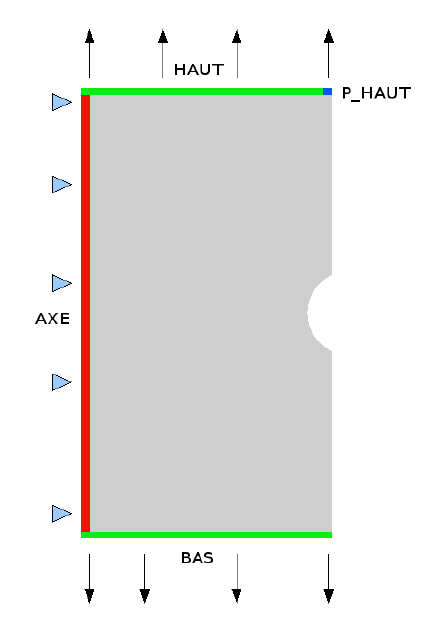1. Reference problem#
1.1. Geometry#
We consider a notched test piece with a height of \(10\mathit{dm}\). With a width \(3\mathit{dm}\) and a notch radius \(1\mathit{dm}\).

Figure 1: Problem Representation
1.2. Common properties of the material#
The material in question is assimilated to concrete (we work on a decimeter scale):
Elastic characteristics:
\(E=3.E10\text{Pa}=3.E8{\text{N/dm}}^{2}\)
\(\nu =0.2\)
Tensile elasticity limit of the law of damage:
\(\mathit{SY}=3.E4{\text{N/dm}}^{2}=3.E6\text{Pa}\)
Energy release rate per crack surface (Griffith constant):
\({G}_{f}=10\text{N/dm}=100{\text{J/m}}^{2}\)
Density:
\(\mathit{Rho}=2300\mathit{Kg}/{m}^{3}=2.3\mathit{Kg}/{\mathit{dm}}^{3}\)
1.3. Boundary conditions and loads#
Block: \(\mathrm{DX}=0\) on the nodes that belong to the axis of symmetry (\(x=0.\)), in order to ensure the maintenance of the structure (in red in Figure 1).
Loading: A movement is imposed on the upper and lower parts of the notched test piece (in green in FIG. 1).